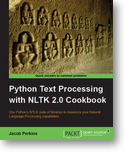Unified Intelligence: Completing the Mosaic of Analytics
Tuesday, Feb. 15 @ 4 ET
From the announcement:
Seeing the big picture requires a convergence of both structured and unstructured data. While each side of that puzzle presents challenges, the unstructured world poses a wider range of issues that must be resolved before meaningful analysis can be done. However, many organizations are discovering that new technologies can be employed to process and transform this unwieldy data, such that it can be united with the traditional realm of business intelligence to bring new meaning and context to analytics.
Register for this episode of The Briefing Room to learn from veteran Analyst James Taylor about how companies can incorporate unstructured data into their decision systems and processes. Taylor will be briefed by Sid Probstein of Attivio, who will tout his company’s patented technology, the Active Intelligence Engine, which uses inverted indexing and a mathematical graph engine to extract, process and align unstructured data. A host of Attivio connectors allow integration with most analytical and many operational systems, including the capability for hierarchical XML data.
I am not real sure what a non-mathematical graph engine would look like but this could be fun.
It is also an opportunity to learn something about how others view the world.
